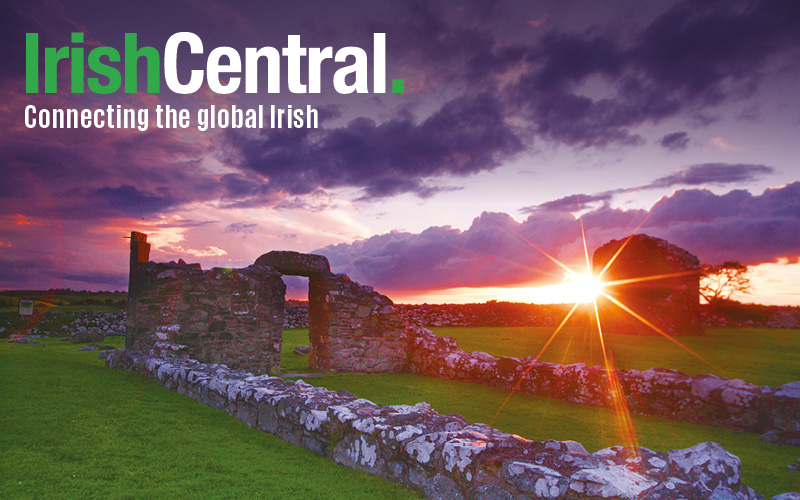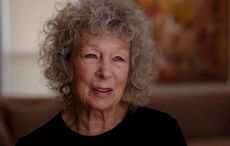Reporting from Tuam, County Galway
“You would not talk to them,” the locals told me in Tuam near Galway City this weekend, “they were outcasts.”
They were speaking to IrishCentral about the mothers and babies secreted away to The Home, an 1840’s institution run by the Bon Secours sisters in the town from 1925 to 1961, but this week locals insisted that more and more people want to remember their sad fates now.
One of them is Paul Kanahan, 46. Yesterday he took the long drive to Tuam from his home in County Sligo to visit the site that in the last fortnight has become one of the most controversial in the world.
Inspired by news reports, Kanahan told IrishCentral he made the trip to the unmarked grave site to pay his respects to the Home Babies and reflect on his own experience as a Home Baby from another notorious mother and baby home called Castlepollard in County Westmeath.
An adoptee and now a father himself, Kanahan found his birth mother and sister in 2010 through a series of lucky breaks and with the health of a priest and a Facebook page for adoptees from the Castlepollard Mothers and Babies home.
“I was very lucky,” he told IrishCentral. “The local priest helped me locate my birth mother. They used to keep the records in the parochial houses before the HSE’s were set up. He suggested my records could still be in the County Hospital in Mullingar.
“I went in with only my date of birth to go on. This is how lucky I was; only one boy was born that day in Castlepollard in February 1968. Talk about a needle in a haystack.”
Kanahan is conscious that he was fortunate himself in a way that thousands have not been. That’s why he made the trip to Tuam, he said.
“I have no doubt that all the 796 babies – and the mothers who died in childbirth – are all buried around this area. The last place they wanted to put them was in consecrated ground. We also believe there’s up to 500 buried in Castlepollard. There’s nothing there to show the real truth about the place either.”
With a population of just over 8000, the name of Tuam comes from a Latin and Irish word for a burial mound. It’s the first irony in a story brimming with them.
Two huge grey cathedrals are the first thing you see of the place, dominating the skyline for miles before you reach the town. Religious sites have been located in Tuam since at least the sixth century, historians believe that a monastery was founded here first and the town grew up around it.
To understand the tragedy of what happened in Tuam over the thirty six years that the building called The Home operated, it helps to visit the controversial unmarked grave site as I did this weekend.
What remains of the seven acre Home (it was abandoned in 1961 and was later demolished) now is a small plot of grass bordered by grey wall in the middle of an out of the way housing estate in County Galway. The local authorities were careful not to build there.
Shielded from the main road by rows and rows of squat council houses, it’s the kind of place you have to know about in order to find. Crows use it as a handy perch, a small grotto filled with fresh wreaths only hints at what went on there.
There’s a continuity to its obscurity: in the thirty six years it operated The Home was hidden on all sides by an eight foot high wall; the woman who were sent there by their disapproving parents and priests reportedly had their names changed by the nuns on arrival; the children who were born there spent their first years fighting viral outbreaks and malnutrition and shrouded in the same silence and shame that had enveloped their mothers. No one disputes this, it’s a matter of record.
Each of these women (and there were thousands of them) gave the lie to the outwardly pious story the nation was telling about itself. They knew it themselves. They were shaming their parents, their religious elders and their community. There was no part of the experience of new motherhood they could welcome.
A quick walk through the town will confirm it. In restaurants and cafes locals’ were conversing in small animated groups about what happened, what they had known, and what they hadn’t.
“I was 18 the year it closed, I’m 71 now,” local Vincent Cunliffe tells IrishCentral. “I remember you’d hear the Home Babies before you’d see them. They made them wear these loud wooden clogs. Sometime you’d see some of the mothers on a Sunday evening. You would not talk to them. Nobody would. They were outcasts.”
Time and again the locals speak of the most distinctively Irish part of the mothers’ punishment, the silent treatment. They would find themselves literally escorted to the edge of their society, where an unbreakable silence would engulf them for the rest of their lives.
It was an Irish equivalent of an omerta code. After it descended it would not lift. Bereft mothers found themselves banished from home forever, like princesses in fairy tales.
“They were sent to England or America, as fast as they could be,” says Cunliffe. “They were told by their own parents they could never come home. This didn’t get said to the men who had gotten them pregnant. But no one questioned it. We were all afraid of the priests.”
What local historian and genealogist Catherine Corless has done for the memory of these women in the last fortnight is something that no one else has; it’s something that can only happen when an eyewitness on the scene recalls a great injustice. She has broken the spell that kept the country complicit, fully and finally.
Stung by her own childhood memories of the rough treatment the Home Babies endured, and curious about the startling reports she had heard from other locals, she began a process of investigation that would result in international headlines.
When Corless produced documents that confirmed 796 infants and children had died at The Home, she unwittingly lit an international firestorm.
Previously the small burial site that created international headlines was known to a few older locals, but usually it was spoken of in the same half-explained way that it was during its years of operation. To discuss it at length was to risk contamination.
That’s what makes Corless discovery so significant. This was not the work of metropolitan academics with a predictable axe to grind; it was unearthed by a local woman, with the ability to interpret between her community and its history.
The Dublin media was caught off guard by the raw intensity of the tale and its unsettling implications. Part of their surprise - and apparently most of their suspicion - was that the revelations were uncovered by a local and that she had done the work that no one else had thought to.
When the broadsheets finally did respond this weekend it was to caution others about their unseemly haste and to fixate on the exact location of the burial site, presumably to discredit the claims that had been made. The world’s media had jumped the gun, they insisted, not us.
No one disputes the 798 deaths however; they’re a matter of record. It’s also worth remembering that Corless’ original intention was to commemorate the dead, not call for a dramatic excavation. But by insisting that the infants had to be buried in the same small plot or the nations outrage would be misplaced and undermined, the broadsheets were merely defending their own tardiness with a late to the scene shrug.
Coreless herself was having none of it: “But still how many children in the tank, does it matter if it’s 500, 600? If there isn’t a full 796? 10 children in a septic tank? 20? Isn’t that horrific? Is it the numbers that makes it horrific?” she told the Irish Times.
Apparently it is, in some quarters. They might not even make it news worth covering.
But Paul Kanahan still thinks it’s news. Looking around the unmarked gravesite on Saturday he shivered and placed a small Teddy Bear beneath the statue of Our Lady.
The burial mound at Tuam will just be the first of many, he predicted.




Comments